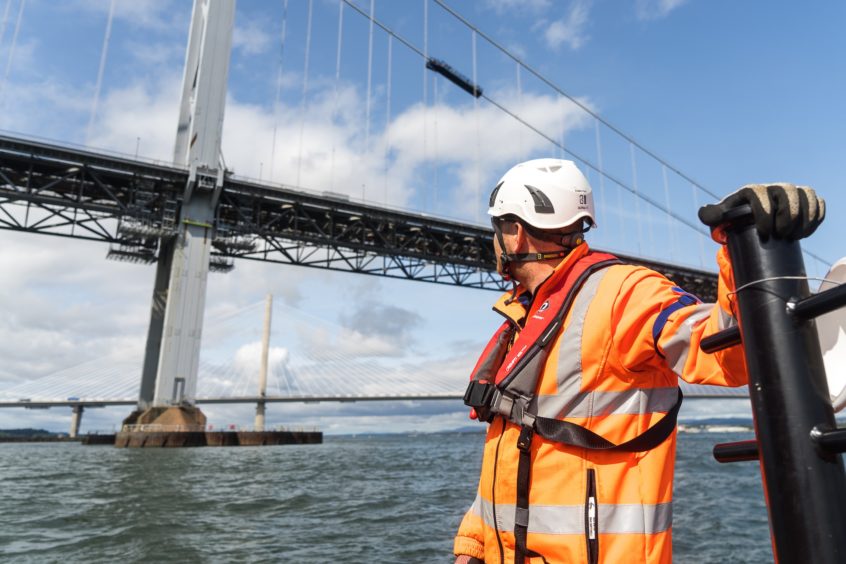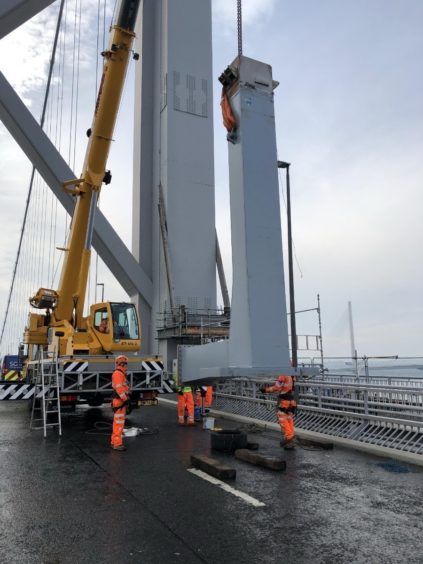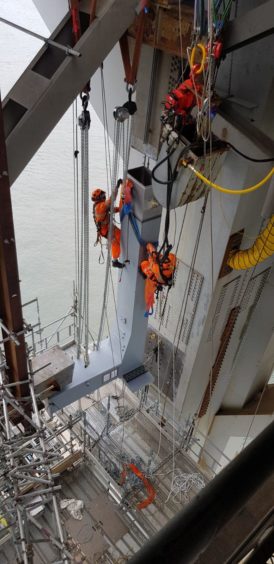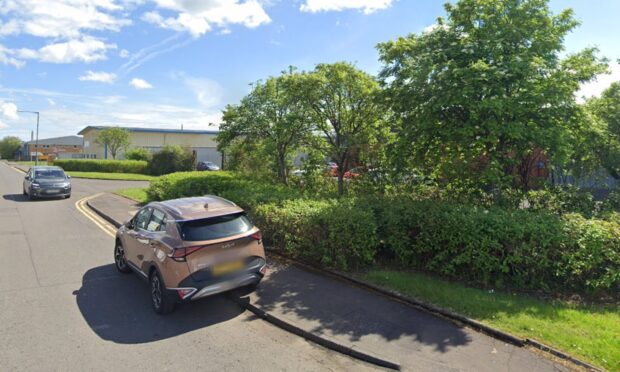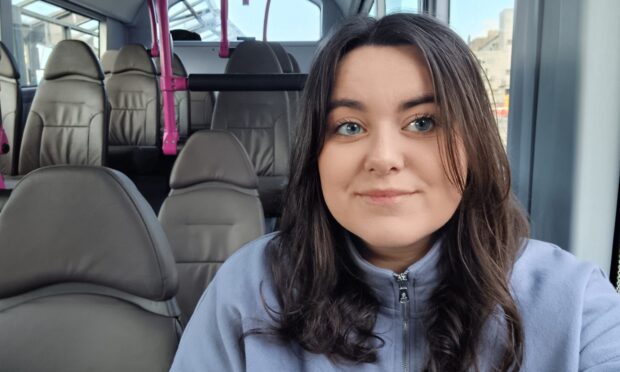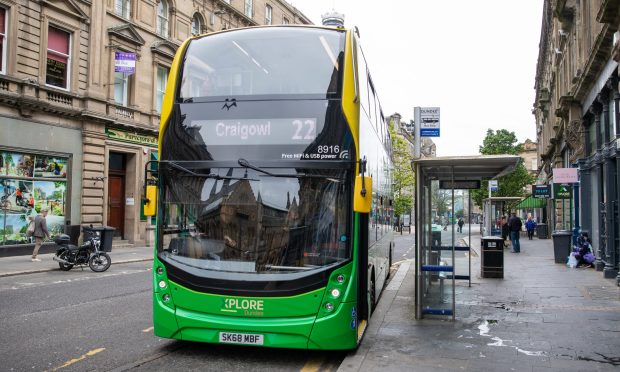A challenging £10 million project to replace huge sections of the Forth Road Bridge with more than 200 tonnes of new steel has been completed.
The works were ordered after a major crack was found in one of eight truss end links that connect the bridge to the towers in December 2015.
The damaged support meant the bridge was forced to close for around three weeks, sparking travel chaos for thousands of motorists.
Bridge owner Transport Scotland decided to replace the other seven key links and hired the Spencer Group to undertake the mammoth project.
Workers cut out the truss end links and replaced them with a new sliding bearing system.
Spencer Group bridges projects manager James Barnes said: “This project has been particularly challenging in relation to access because the truss end links and the new bearings we have fitted are below the bridge deck, about 40 metres above the water.
“No permanent access was in place, so we installed a temporary access platform to allow our personnel to reach the location of the works.”
More than 200 tonnes of new steel had to be fabricated and joined it to the existing structure in some very inaccessible areas.
All of the pieces had to be lifted onto the bridge deck or lowered to a workboat, meaning some major lifting, hoisting and access challenges had to be overcome.
Mr Barnes said: “A key factor in the success of this project has been the collaborative approach between everyone involved.
“It’s been a real team effort to come up with the right solutions and undertake the works in the most efficient manner, with safety the number one priority.”
Amey, the long-term maintenance contractor for the Forth Road Bridge, represented Transport Scotland on the project.
Angus Bruce, Amey’s major bridges manager, said: “A key requirement of the project was for the contractor to have previously worked on long-span, cable-supported bridges and Spencer Group is one of only a handful of contractors to have this experience.”
Workmen have also taken steps to make future repairs easier by installing permanent access stairs and platforms to allow for easy and safe inspections.
The bridge closed at the beginning of December 2015 after engineers found a 2cm hairline crack.
We recently repaired the truss end links on the iconic Forth Road bridge in Scotland. #ExtraordinaryEngineering @ICE_engineers @ICEScotland #ICEbridgesmonth #ICEbridges pic.twitter.com/dvN0eG4WXt
— Spencer Group (@Spencer_Group) February 12, 2019
Further investigations found an additional eight areas of concern.
An estimated 70,000 commuters who used the crossing between Edinburgh and Fife daily were forced to divert via the Clackmannanshire and Kincardine Bridges.
Heavy delays were experienced with tailbacks often being more than 11 miles long.
A probe found the crack could not have been predicted.
